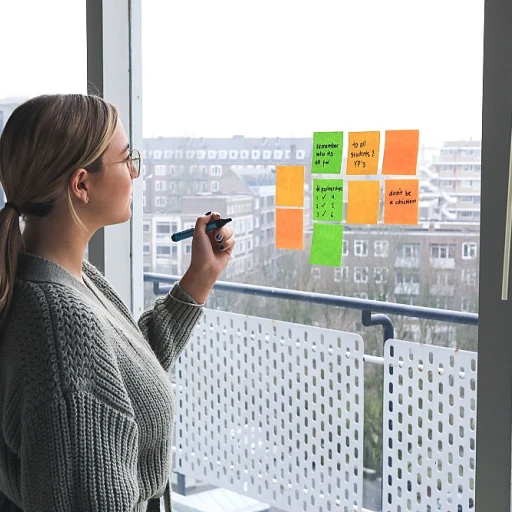Understanding Employee Experience Tools
Getting to Know Employee Experience Tools
When we talk about employee experience tools, we’re diving into the heart of what makes a workplace tick. These tools are more than just software; they’re the bridge between employees and management, helping to foster a positive work environment. They gather real-time feedback, recognize employee achievements, and provide insights into performance management.
Imagine a platform where employees can voice their thoughts, and managers can listen and act accordingly. This is where employee feedback tools come into play. They capture the pulse of the company culture, ensuring that everyone feels heard and valued. By using these tools, organizations can improve employee engagement and create a more cohesive team.
The Role of Technology in Employee Experience
Technology has revolutionized how we manage employee experience. With advanced experience platforms, companies can now access data-driven insights that were previously out of reach. These insights help in shaping a better work environment and enhancing employee recognition.
For example, some platforms offer features like recognition rewards, which boost morale and motivate teams. Others focus on performance management, providing a clear picture of how employees are performing over time. By leveraging these tools, companies can not only improve employee satisfaction but also drive productivity.
To learn more about how digital tools are enhancing employee experiences, you can explore enhancing the digital experience for employees.
Key Features of Effective Employee Experience Tools
Features That Elevate Employee Experience Tools
When it comes to improving employee experience, the right tools can make all the difference. But what features should you look for in these tools? Let's break it down.
Real-Time Feedback Mechanisms
One of the most valuable features of employee experience tools is the ability to gather real-time feedback. Employees want to be heard, and companies need to listen. Real-time feedback mechanisms allow employees to share their thoughts and feelings about their work environment instantly. This helps organizations address concerns promptly and fosters a culture of openness and trust.
Data-Driven Insights
In today's fast-paced work environment, having access to data-driven insights is crucial. Effective tools provide managers with valuable data that can help improve employee engagement and performance. By analyzing this data, companies can identify trends and make informed decisions to enhance their workplace culture.
Recognition and Rewards Systems
Employee recognition is a powerful motivator. Tools that include recognition and rewards systems can significantly boost morale and productivity. When employees feel appreciated, they're more likely to be engaged and committed to their work. These systems can be as simple as a digital "thank you" note or as elaborate as a points-based reward system.
Integration with Existing Platforms
Seamless integration with existing platforms is another important feature. Employees don't want to juggle multiple systems. Tools that integrate smoothly with existing software and platforms make it easier for teams to collaborate and communicate effectively. This integration also saves time and reduces frustration.
Performance Management Capabilities
Effective employee experience tools should also offer performance management capabilities. This includes setting goals, tracking progress, and providing feedback. By using these features, managers can help employees grow and develop in their roles, leading to improved job satisfaction and productivity.
Enhancing the Digital Experience
For more insights on how to enhance the digital experience for employees, check out this article. It offers valuable tips and strategies for creating a more engaging and efficient digital workplace.
Incorporating these features into your employee experience tools can lead to a more engaged and satisfied workforce. By prioritizing real-time feedback, data-driven insights, recognition, integration, and performance management, companies can create a work environment that supports and empowers their employees.
Popular Tools in the Market
Exploring Popular Employee Experience Platforms
When it comes to boosting the employee experience, a few platforms have made a name for themselves by offering features that cater to both management and employees. These tools not only streamline processes but also enhance the work environment, making it more engaging and rewarding. Let's take a closer look at some of these popular platforms.
1. Qualtrics EmployeeXM
Qualtrics EmployeeXM is a standout in the experience management space. It provides real-time feedback, allowing companies to gather insights into employee engagement and satisfaction. With its data-driven approach, organizations can make informed decisions to improve company culture and performance. The platform's integration capabilities with other management software make it a versatile choice for any organization.
2. Culture Amp
Culture Amp is another powerful tool that focuses on employee feedback and engagement. It offers a comprehensive set of features that help companies understand their employees' needs and expectations. With its user-friendly interface, Culture Amp makes it easy for teams to collect and analyze data, providing actionable insights to improve the work environment. The platform also supports employee recognition and rewards, fostering a culture of appreciation and motivation.
3. Workday
Workday is a well-known name in performance management and employee experience. This platform offers a range of tools that help organizations manage their workforce effectively. From tracking performance to providing real-time feedback, Workday ensures that employees are aligned with company goals. Its robust analytics capabilities allow companies to gain a deeper understanding of their workforce, leading to better decision-making and improved employee engagement.
4. Glint
Glint is an employee engagement platform that focuses on providing insights into employee happiness and productivity. By collecting feedback through regular surveys, Glint helps companies identify areas for improvement and track progress over time. Its intuitive dashboard and reporting features make it easy for management to visualize data and implement changes that enhance the employee experience.
5. BambooHR
BambooHR is a popular choice for small to medium-sized businesses looking to improve their employee experience. This platform offers a range of features, including performance management, employee feedback, and recognition tools. With its easy-to-use interface, BambooHR simplifies HR processes and helps companies create a positive work environment. Its focus on employee engagement and culture makes it a valuable asset for any organization.
These platforms are just a few examples of how technology can be leveraged to improve employee experience. By choosing the right tools, companies can foster a positive work environment that supports employee engagement and satisfaction. For more insights on enhancing the employee experience, especially in remote work settings, check out this article.
Implementing Employee Experience Tools Successfully
Setting the Stage for Success
Implementing employee experience tools is like setting up a stage for a great performance. You want everything in place so the show can go on without a hitch. The first step is understanding what your employees need. Are they looking for better communication, more recognition, or maybe a more efficient way to give feedback? Identifying these needs helps in choosing the right experience platform.
Choosing the Right Tools
Once you know what your employees are looking for, it’s time to pick the right tools. Look for platforms that offer real-time feedback, employee recognition, and performance management features. Tools that provide insights into employee engagement can be invaluable. Remember, the best employee experience software is one that fits seamlessly into your company culture and work environment.
Getting Everyone On Board
After selecting the tools, the next step is to get everyone on board. Communication is key here. Explain to your teams why these tools are being introduced and how they will benefit them. Providing training sessions can help employees feel more comfortable with the new software. When employees understand the value of these tools, they are more likely to engage with them actively.
Monitoring and Adjusting
Implementing the tools is not a one-time task. It requires ongoing monitoring and adjustments. Regularly check the data and feedback collected by the tools to see what’s working and what’s not. This will help in making necessary changes and improvements. Involve employees in this process by asking for their feedback on the tools. This not only improves the tools but also boosts employee engagement.
Celebrating Successes
Finally, celebrate the successes that come from using these tools. Whether it’s improved employee performance, better team collaboration, or enhanced company culture, recognizing these achievements can motivate everyone to continue using the tools effectively. Employee recognition and rewards can go a long way in maintaining a positive work environment.
Measuring the Impact of Employee Experience Tools
Tracking Success with Employee Experience Tools
Measuring the impact of employee experience tools is like checking the pulse of your workplace. These tools are not just shiny new gadgets; they hold the power to transform how employees feel and perform at work. But how do you know if they're doing their job? Let's break it down.
Collecting Employee Feedback
First things first, gather feedback from the people who matter most—your employees. Experience platforms often come with features that allow for real-time feedback collection. This data-driven approach helps in understanding what's working and what's not. Employees feel valued when their voices are heard, and it provides management with insights to improve the work environment.
Analyzing Performance and Engagement
Next, dive into performance management. Are employees more engaged? Has productivity improved? Use the data collected by these tools to analyze trends over time. A good experience platform will offer insights into employee engagement levels, helping you spot areas for improvement and recognize top performers.
Evaluating Employee Recognition Programs
Recognition rewards are another critical piece of the puzzle. An effective employee recognition program boosts morale and encourages a positive company culture. Track how often recognition is given and received. This can be a strong indicator of the program's success and its impact on employee engagement.
Monitoring Company Culture
Finally, keep an eye on company culture. Is it improving? Are employees more satisfied with their work environment? Culture amp features in experience software can provide a snapshot of the overall mood within the organization. This helps in making informed decisions about necessary changes.
In a nutshell, the right tools can provide a wealth of data and insights. By paying attention to employee feedback, performance, recognition, and culture, you can gauge the effectiveness of your employee experience initiatives. It's all about creating a better workplace, one data point at a time.






